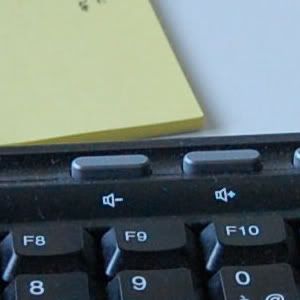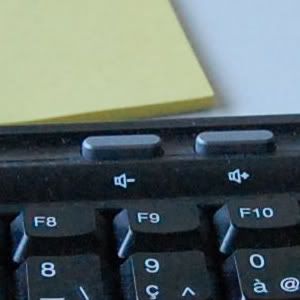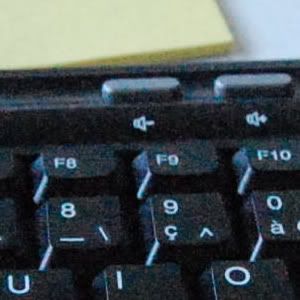This thread is meant to be in the Photography 101 sticky (under construction) Anyone willing to participate can post their help as a reply and I will add it to the main post. I will also put the names of all those who contributed to this part.
I.Introduction
Your eye has the ability to adapt to light and distance depending on what you want to see. On a reflex you can adjust settings in two different places: The menu and the lens. If we pretend that your object is neat and that you adjusted the focus (AF or MF) you must deal with light. When it comes to light, there are three different settings you need to adjust: Aperture, Exposure and ISO.
II.Aperture
To explain, we pretend we are at ISO200 and Speed 1/250 sec (random).
The aperture is a setting on your reflex that lets you adjust the diameter of the opening of the lens. For example let's take a lens, there are lots of info on it:
18-55mm F3.5-5.6
The aperture on this lens is between 1/3.5 at 18mm (minimum) and 5.6 at 55mm (minimum). Aperture is written as F/number which means The whole diameter/number. The smaller the number, the most open your lens will be.
This means that you will get more light in 1/250sec if you are at F/3.5 than if you are at F/5.6.
Light is one of the effects aperture has on the picture, depth of field is another. The more open your lens will (lowest number) the lower the depth of field will be. This means that at F/3.5, your photography will have a smaller point of focus than at F/5.6.
Needs cropped image to explain and illustrate
III.Exposure
To explain, we pretend we are at ISO200 and Aperture F/10 (random).
Exposure or time in which the captor will be taking the picture is a setting you adjust in the menu of your reflex. The longer (in time) you set it to open, the more the light comes in. This can also be used for effects on movement: if you open your reflex for a long time, movements will be blurred:


On these two pictures, the reflex was steady, only the objects moved.
IV.ISO Speed
ISO Speed is the speed at which your sensor gets light. The higher ISO, the more the light. That is useful in dark conditions or in sports were you need to open really fast (automobile races). The downside of a higher ISO speed is noise. The higher the speed, the higher the noise as shown below:
ISO 800,1600,3200:
(Speed was decreased to keep the exposition)



V.Conclusion
With these three settings, you can adjust the photography to whatever you want it to look like and add effects. They work in a triangle where you want to place your picture in the middle for a "normal picture" (without effects):

Contributors: Punk
I.Introduction
Your eye has the ability to adapt to light and distance depending on what you want to see. On a reflex you can adjust settings in two different places: The menu and the lens. If we pretend that your object is neat and that you adjusted the focus (AF or MF) you must deal with light. When it comes to light, there are three different settings you need to adjust: Aperture, Exposure and ISO.
II.Aperture
To explain, we pretend we are at ISO200 and Speed 1/250 sec (random).
The aperture is a setting on your reflex that lets you adjust the diameter of the opening of the lens. For example let's take a lens, there are lots of info on it:
18-55mm F3.5-5.6
The aperture on this lens is between 1/3.5 at 18mm (minimum) and 5.6 at 55mm (minimum). Aperture is written as F/number which means The whole diameter/number. The smaller the number, the most open your lens will be.
This means that you will get more light in 1/250sec if you are at F/3.5 than if you are at F/5.6.
Light is one of the effects aperture has on the picture, depth of field is another. The more open your lens will (lowest number) the lower the depth of field will be. This means that at F/3.5, your photography will have a smaller point of focus than at F/5.6.
Needs cropped image to explain and illustrate
III.Exposure
To explain, we pretend we are at ISO200 and Aperture F/10 (random).
Exposure or time in which the captor will be taking the picture is a setting you adjust in the menu of your reflex. The longer (in time) you set it to open, the more the light comes in. This can also be used for effects on movement: if you open your reflex for a long time, movements will be blurred:


On these two pictures, the reflex was steady, only the objects moved.
IV.ISO Speed
ISO Speed is the speed at which your sensor gets light. The higher ISO, the more the light. That is useful in dark conditions or in sports were you need to open really fast (automobile races). The downside of a higher ISO speed is noise. The higher the speed, the higher the noise as shown below:
ISO 800,1600,3200:
(Speed was decreased to keep the exposition)



V.Conclusion
With these three settings, you can adjust the photography to whatever you want it to look like and add effects. They work in a triangle where you want to place your picture in the middle for a "normal picture" (without effects):

Contributors: Punk
Last edited:
